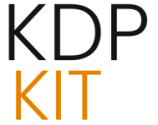
The Technical Architecture: Formatting, Standardization, and Legal Identity
Once the content is polished and the visual shell is finalized, the manuscript must be converted into specific, industry-accepted formats. This technical choreography is essential for seamless distribution across the myriad of digital and physical platforms you will use to reach readers. Furthermore, establishing a legal identity is a prerequisite for serious, wide distribution beyond closed ecosystems.
Digital Typography and Layout Preparation for Ebook Platforms
Ebooks are defined by their ability to *reflow*—meaning the text, margins, and images adjust intelligently to whatever screen size the reader is using, from a massive tablet to a small phone. This adaptability is key to the modern reading experience. The primary file structure for the biggest digital marketplaces remains the **EPUB** file (version 2 or 3, flowable text), which major retailers like Apple Books and Kobo use directly. Amazon Kindle Direct Publishing (KDP) traditionally favored DOCX for internal conversion, but recent updates in 2025 show a continued push toward more controlled formats, especially for certain genres. Here is the critical distinction for authors in 2025: * For Wide Distribution (EPUB): If you want your book on Apple, Kobo, and through aggregators like IngramSpark, you need a clean, flowable **EPUB**. This format sacrifices precise layout control for universal readability. Ensure there are no hard returns where a simple line break will do, and check that your internal table of contents (TOC) is correctly coded. * For Fixed Layout or High-Fidelity Workbooks (PDF): For content-heavy works—like graphic novels, extensive workbooks, or heavily formatted guides—a **PDF** offers absolute layout preservation. While PDFs are page-fixed and lack reflowability (making them difficult for standard novel reading), they remain the ideal choice for direct sales from your own website, such as through a Shopify store, where you control the exact visual presentation. Note that for print editions, KDP and IngramSpark *both* currently require a **PDF** for the final interior file, though their cover specifications differ. Authors must make a clear strategic choice: Do you prioritize maximum market reach (EPUB/KPF for reflowable flexibility) or precise layout control (PDF for niche/direct sales)?
Navigating the International Standard Book Number Requirement
The **ISBN** is your book’s unique fingerprint—the one identifier essential for tracking inventory, managing sales, and being cataloged correctly by libraries and global retailers. For any author serious about being recognized outside of a single, self-contained platform, acquiring your own ISBNs is a mandatory investment in brand ownership. You have two primary paths for ISBN acquisition in 2025: 1. Free Platform ISBN: Distribution platforms like KDP offer a free ISBN. The catch? They are listed as the official publisher of record. This compromises your independent branding and, critically, **prevents you from transferring the title** to another distributor later, trapping you on that platform. 2. Purchasing Your Own (The Author’s Imprint): To publish under your own imprint or name, you must purchase your ISBNs from your national agency (like Bowker in the US). The cost comparison for US authors, as of this writing in October 2025, is stark: * Single ISBN: Approximately **$125 USD**. * Block of 10 ISBNs: Approximately **$295 USD**. Purchasing the block is an investment that cuts the per-unit cost to roughly **$29.50 USD** each. Since ISBNs never expire, this bundle buys you tremendous flexibility for future formats (hardcover, paperback, ebook, audiobook) of the current book and several future titles, directly investing in your long-term brand equity.
Distribution Ecosystems: Choosing Your Sales Channels for Maximum Reach and Revenue. Find out more about professional book cover design for mobile thumbnail.
The distribution decision in 2025 is less about *where* to sell and more about *how to balance* massive marketplace reach with superior direct revenue and customer ownership. The data shows that a hybrid approach is the only way to scale sustainably.
The Direct-to-Reader Advantage: Leveraging E-commerce Platforms like Shopify
Platforms such as **Shopify** have become the anchor for the modern self-published author’s business. By establishing your own dedicated online store, you cease being a tiny component in a massive corporate machine and begin operating an independent, scalable e-commerce entity. The financial incentive is immediate and significant. Consider the royalty structure: * Marketplace royalties often hover between 35% and 70% for ebooks. * Selling directly via your store means you retain *nearly 100%* of the sale price, minus only the low transaction and payment processing fees charged by the platform itself. But profit is only half the story. The most valuable asset you gain is **ownership of your customer data**. Owning the customer email address is digital gold. It grants you direct, unfiltered access—the ability to announce new releases, promote your backlist titles, offer exclusive bundles, or launch supplementary products, all independent of any third-party algorithm changes. This synergy transforms a book launch into a sustainable, long-term business operation for authors building a platform.
Actionable Tip: The Email List is Your Moat
Every direct sale is a lead captured. Your primary goal on your Shopify store should be to convert that one-time buyer into a permanent subscriber. Offer a high-value freebie—a bonus chapter, a world map PDF, a reading guide—in exchange for an email address. This email list is the only audience you truly own.
Assessing Marketplace Dominance Versus Direct Customer Ownership. Find out more about how to buy ISBN for self publishing under own imprint guide.
Ignoring major online marketplaces like Amazon is still ill-advised; they account for a massive percentage of initial book discovery and sales globally. However, the trend in 2025 is a deliberate migration of *high-margin* sales back to author-owned channels. The optimal strategy involves a calculated hybrid: 1. Use Marketplaces for Exposure: Ensure your book is available everywhere the casual buyer searches. This maximizes accessibility and overall unit sales volume. 2. Drive Traffic to Your Store for Profit: Use your marketplace listings, social media presence, and author events to actively direct customers to your dedicated store for higher-margin purchases. While Amazon builds *its* customer base, every sale through your Shopify portal strengthens *your* independent brand equity. This allows for crucial cross-promotion with merchandise, paid membership tiers, or specialized online courses related to your book’s subject matter. Furthermore, recent shifts in platform pricing have made this balance even more critical. For instance, KDP has recently adjusted its royalty structure for print books priced below a certain threshold (like $9.99 USD in the US), reducing the royalty rate from 60% to 50%. This move incentivizes authors to maintain higher retail prices or shift lower-priced sales to direct channels where the full margin is retained. Survey data from 2025 shows that authors who have published more titles are committing more heavily to this direct sales model, suggesting it’s a necessary component for long-term author business building.
Revolutionizing Production: Print-on-Demand and Inventory-Free Fulfillment
The logistical nightmare that defined decades of self-publishing—the massive upfront capital required for offset printing, the storage headache, and the shipping chaos—has been largely neutralized by Print-on-Demand (POD) technology. This flexibility is the engine behind the low-risk model of independent publishing today.
Integrating Print-on-Demand Services Through Specialized Apps
POD operates on a simple, powerful fulfillment model: a book is manufactured *only after* a customer places an order. This is facilitated through specialized integrations—often available as apps—within your e-commerce ecosystem. To connect your author store (like Shopify) directly to the printer’s production line, you need a reliable POD partner integration. As of 2025, the most robust and widely adopted platforms that offer seamless Shopify apps include:
- Printify: Known for its vast network of global print providers.
- Printful: A favorite for its integrated fulfillment and branding options.. Find out more about best direct-to-consumer book sales platform for authors tips.
- Gooten: Offers a wide product catalog and worldwide fulfillment.
- Apliiq: Noted for its focus on quality and sustainability in apparel and other goods.
When a customer purchases a paperback or hardcover from your website, the order information is automatically relayed to the POD partner. They print the book, package it (often white-labeled to maintain your brand), and ship it directly to the customer. This eliminates physical stock management and the risk of capital tied up in unsold inventory. This is the perfect mechanism for test-marketing niche titles or fulfilling steady, long-term demand for a successful backlist. For more information on the technical side of getting your PDF files to work with these services, check out guides on IngramSpark formatting, as print requirements can vary significantly from KDP.
Understanding the Unit Economics of Modern Book Printing Methods
While the convenience of POD is unbeatable, you must master the unit economics to ensure profitability. The cost per copy is inherently higher than bulk offset printing, but that risk is zero. Your final unit cost is a function of several variables: * Trim size and page count. * Binding type (paperback vs. hardcover). * Paper quality and color specifications (black-and-white vs. full color). For a short, simple, black-and-white paperback, the production cost on some platforms might be as low as **$2 to $3 USD** per copy. Conversely, a premium, oversized, full-color hardcover art book could easily command a production cost approaching **$30 USD** per copy from specialized services. Understanding these production costs is absolutely vital. You must calculate these variable costs precisely when setting your retail price on both your direct store and your marketplace listings to guarantee healthy profit margins *after* printing and distribution fees are subtracted.
A Note on Print Formatting. Find out more about Shopify integration for print-on-demand book fulfillment strategies.
When preparing files for a POD service that distributes widely (like IngramSpark), remember that print interiors must be a press-ready **PDF**, requiring precise bleed, margin control, and 300ppi images in CMYK color space. This is a different technical document than your reflowable ebook file.
Scaling Success: Post-Launch Marketing and Long-Term Author Brand Building
The publication date is not the finish line; it is merely the starting gun for your book’s commercial life. Sustained success in the 2025 publishing sphere hinges on a continuous, evolving marketing effort that positions the book as the cornerstone of a broader, multi-faceted author brand.
Developing a Content-Driven Marketing Strategy Beyond Book Launch Day. Find out more about Professional book cover design for mobile thumbnail overview.
A book’s initial launch window is brief, but your content engine should be perpetual. The most potent modern strategy involves weaving the book’s themes or narrative world into ongoing, valuable content delivered directly to the target audience you identified in your initial planning phase. This keeps the book visible and relevant months and years after the initial promotional push ends. * For Nonfiction Authors: Consistently produce high-value blog posts, participate in targeted social media discussions where your reader persona actively engages, or create short-form video content that succinctly summarizes key concepts from your book. Use this content as a perpetual funnel back to your primary sales pages. * For Fiction Writers: Release short stories set in the same universe, offer behind-the-scenes glimpses into your world-building process, or actively engage with dedicated fan communities. This sustained content strategy ensures that your book, whether listed on Amazon or your Shopify portal, is constantly encountering new potential readers. For more on building that long-term visibility, examine strategies around author platform revenue diversification.
Exploring Supplementary Revenue Streams Through Your Author Platform
The author platform—comprising your website, the email list you built via direct sales, and your social media footprint—is a significant, scalable business asset. Successful authors in 2025 do not rely solely on per-unit book sales; they diversify their income streams using this built-in audience trust.
The Path to Diversified Income
Your own website is the ideal location to host these higher-value offerings. This cements the direct-to-reader relationship, maximizing the lifetime value of every follower you acquired through your initial book marketing efforts. For a deeper dive into the financial structures of independent publishing, review analyses of marketplace dominance versus direct sales, which highlight the revenue gap you stand to close.
Conclusion: The Professional Publisher’s Blueprint for 2025
Building a successful self-published book in 2025 is an exercise in technical precision married to marketing acuity. The barrier to entry is low, but the barrier to *visibility* is higher than ever. The key takeaways you must internalize today are:
- The Cover is Your Click Engine: Invest in professional design that prioritizes clarity and genre signaling at thumbnail size. Budget **$250 – $800 USD** for custom quality, and always perform the screen-size test.
- Own Your Identity: Purchase your own ISBNs from the official agency (e.g., **$295 USD** for a block of 10 in the US) to maintain complete brand ownership and transferability.
- Master the Hybrid Model: Use massive marketplaces for exposure while actively driving traffic to your own e-commerce platform to maximize profit and capture vital customer data.
- Print Smart, Not Heavy: Leverage modern **Print-on-Demand** services integrated with your store via apps like **Printify** or **Printful** to eliminate inventory risk.
- Build an Enterprise, Not Just a Book: View your book as the first product in a line. Your marketing must be perpetual content that feeds directly into diversified, higher-margin offerings hosted on your proprietary author platform.
By adopting this holistic, business-minded approach to visual identity, technical setup, and distribution, you are not just releasing a book—you are establishing a durable, scalable literary enterprise ready for the competitive landscape of 2025 and beyond. What is the single biggest technical hurdle you face right now—is it file formatting for EPUB or cover design for the thumbnail? Share your biggest 2025 challenge in the comments below!






